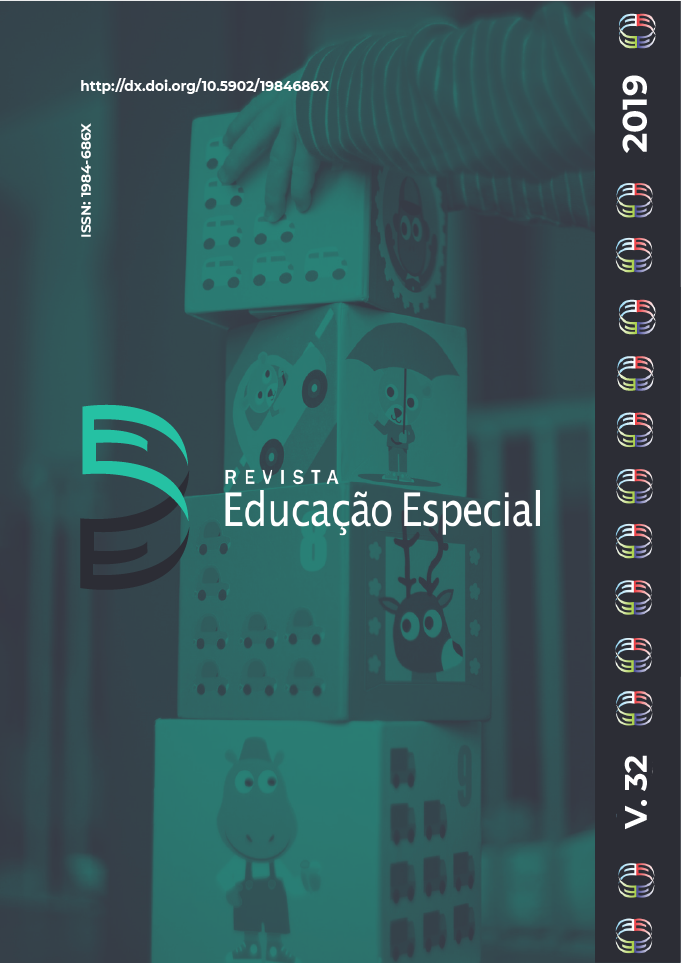La producción de guiones de audio-descripción de vídeos hecha por principiantes: dificultades comunes y sugerencias para evitarlas
DOI:
https://doi.org/10.5902/1984686X35720Palabras clave:
Audio-descripción, Accesibilidad, Inclusión.Resumen
La enseñanza de las técnicas de audio-descripción (A-D), como modalidad de traducción visual y recurso de accesibilidad, está cada vez más presente en diversos tipos de cursos: cursos libres, universitarios, de extensión y posgrado. Es probable que estudiantes principiantes, al producir el primer guión de A-D para vídeos o películas, presenten dificultades similares. En este estudio, el objetivo fue detectar dificultades similares de los alumnos principiantes al producir el primer guión de A-D de videos, para entonces ofrecer sugerencias a los profesores de A-D. Se analizaron 49 guiones del curso Principios y Técnicas de la Audio-descripción: Aplicabilidad en Contextos Culturales Educacionales, promovido por el Núcleo de Educación a Distancia de la UNESP y realizado en 2016. Entre las dificultades más comúnmente encontradas, se destacan: ausencia de descripción donde podría haber; tiempo de lectura del texto audio-descriptivo mayor que el tiempo disponible en el vídeo; uso indebido de los artículos definidos en lugar de los indefinidos y/o omisión de los indefinidos; interpretaciones personales; uso del posesivo su(s) y uso innecesario de lenguaje técnico/fílmico. Se percibió que gran parte de las dificultades presentadas por los estudiantes se debe al hecho de que no tuvieron suficiente contacto con modelos profesionales de guiones audio-descriptivos antes de producir el primer guión. La detección de algunas de las dificultades más comunes en los guiones de principiantes en A-D permite que futuros cursos y profesores, conscientes de esas dificultades, puedan trabajar de manera que ya no ocurran desde el primer guión producido por los estudiantes.Descargas
Citas
ALVES, Soraya F.; TELES, Veryanne C.; PEREIRA, Tomás V. Propostas para um modelo brasileiro de audiodescrição para deficientes visuais. In: Revista Tradução e Comunicação. N. 22, 2011. Disponível em: <http://sare.anhanguera.com/index.php/rtcom/article/view/3158/1215>. Acesso em: 04 de janeiro de 2017.
AUDIO DESCRIPTION COALITION, Diretrizes para Áudio-Descrição e Código de Conduta Profissional para Áudio-descritores. Trad. VIEIRA, Paulo André de Melo. In: Revista Brasileira de Tradução Visual, vol.4, 2010. Disponível em <http://www.rbtv.associadosdainclusao.com.br/>. Acesso em: 14 de setembro de 2013.
ITC Guidance on Standards for Audiodescription, Audetel, 2000.
JAKOBSON, Roman. Aspectos linguísticos da tradução. Trad. Izidoro Blikstein. Linguística e Comunicação. São Paulo: Cultrix, 1995, pp. 63-86.
LIMA, Francisco J. de. Introdução aos estudos do roteiro para áudio -descrição: sugestões para a construção de um script anotado. In: Revista Brasileira de Tradução Visual, v. 7, 2011. Disponível em <http://www.rbtv.associadosdainclusao.com.br/index.php/>. Acesso em: 22 de julho de 2014.
_____. A Correta Grafia de Áudio-descrição. Portal Lerparaver, uma janela para o mundo, 05 abr. 2016. Disponível em: < http://www.lerparaver.com/lpv/correta-grafia-audio-descricao>. Acesso em: 10 dez. 2017.
LIMA, Francisco J. de; GUEDES, Lívia C.; GUEDES, Marcelo C. Áudio-descrição: orientações para uma prática sem barreiras atitudinais. In: Revista Brasileira de Tradução Visual, 2010. Vol.2. Disponível em: <http://www.associadosdainclusao.com.br/enades2016/sites/all/themes/berry/documentos/04-audio-descricao-pratica-sem-barreiras-atitudinais.pdf>. Acesso em: 10 de janeiro de 2017.
MIANES, Felipe L. Consultoria em audiodescrição: alguns caminhos e possibilidades. In: CARPES, Daiana Stockey (Org.). Audiodescrição: práticas e reflexões. Santa Cruz do Sul: Catarse, 1ª ed., 2016.
MONTE, Mônica M. Roteirizar, gravar, editar: Os efeitos da edição sobre os filmes audiodescritos exibidos na TV brasileira. In: CARPES, Daiana Stockey (Org.). Audiodescrição: práticas e reflexões. Santa Cruz do Sul: Catarse, 1ª ed., 2016.
MOTTA, Livia M. V. de M. A audiodescrição vai à ópera. In: MOTTA, Lívia M. V. de M.; ROMEU FILHO, Paulo (org.). Audiodescrição: transformando imagens em palavras. São Paulo: Secretaria dos Direitos da Pessoa com Deficiência do Estado de São Paulo, 2010.
NAVES, Sylvia R. B. (org.). Guia orientador para acessibilidade de produções audiovisuais. 2015. Disponível em: <https://www.camara.gov.br/internet/agencia/pdf/guia_audiovisuais.pdf>. Acesso em: 08 de janeiro de 2017.
OLIVEIRA JÚNIOR, Juarez N. de; PRAXEDES FILHO, Pedro H. L. - A (não) neutralidade em roteiros de audiodescrição-AD de filmes de curta-metragem via sistema de avaliatividade. In: CARPES, Daiana Stockey (Org.). Audiodescrição: práticas e reflexões. Santa Cruz do Sul: Catarse, 1ª ed., 2016.
STANDARDS FOR AUDIO DESCRIPTION AND CODE OF PROFESSIONAL CONDUCT FOR DESCRIBERS. Disponível em: . Acesso em: 25 de novembro de 2013.
UNE 153020. Audiodescripción para personas com discapacidad visual. Requisitos para la audiodescripción y elaboración de audioguías, Madrid: AENOR, 2005.
Publicado
Cómo citar
Número
Sección
Licencia

This work is licensed under a Creative Commons Attribution-NonCommercial 4.0 International (CC BY-NC 4.0)
DECLARAÇÃO DE ORIGINALIDADE E DIREITOS AUTORAIS
Declaramos o artigo a ser submetido para avaliação na Revista Educação Especial (UFSM) é original e inédito, assim como não foi enviado para qualquer outra publicação, como um todo ou uma fração.
Também reconhecemos que a submissão dos originais à Revista Educação Especial (UFSM) implica na transferência de direitos autorais para publicação digital na revista. Em caso de incumprimento, o infrator receberá sanções e penalidades previstas pela Lei Brasileira de Proteção de Direitos Autorais (n. 9610, de 19/02/98).







